Here is where you would enter your blog text.
Pixar is where I would work if I didn’t work at CMU.
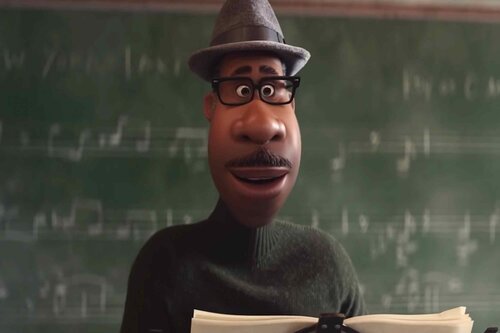
[OLD FALL 2020] 15-104 • Introduction to Computing for Creative Practice
Professor Tom Cortina • Fall 2020 • Introduction to Computing for Creative Practice
Here is where you would enter your blog text.
Pixar is where I would work if I didn’t work at CMU.

Espen Kluge , “Alternatives”
During my deep dive into tech artists, I came across a portrait series by Espen Kluge titled, “Alternatives”. The creation process included compiling multiple photographs and reworking them with creative code to arrive at an abstracted portrait. Each portrait uses soft colors which portrays a gentle color scheme to a harsh compilation of lines and geometric shapes. His portraits feel architectural, but are toned down by their muted colors. It’s interesting to note that he experimented with different facial expressions per portrait to arrive at an abstracted face. In an interview, he states,” evolution has trained us to read the nuance of human facial expression with a higher degree of sensitivity than any other visual input.” his focus on the subtle expressions are covered by the multiple generated vectors on his portraits, but still evoke the creases and lines of a facial expression. He used processing and JavaScript to create his colorful portraiture series and explained that the code loops through all the pixels at semi random, and generates lines between the pixels to create the portraiture.
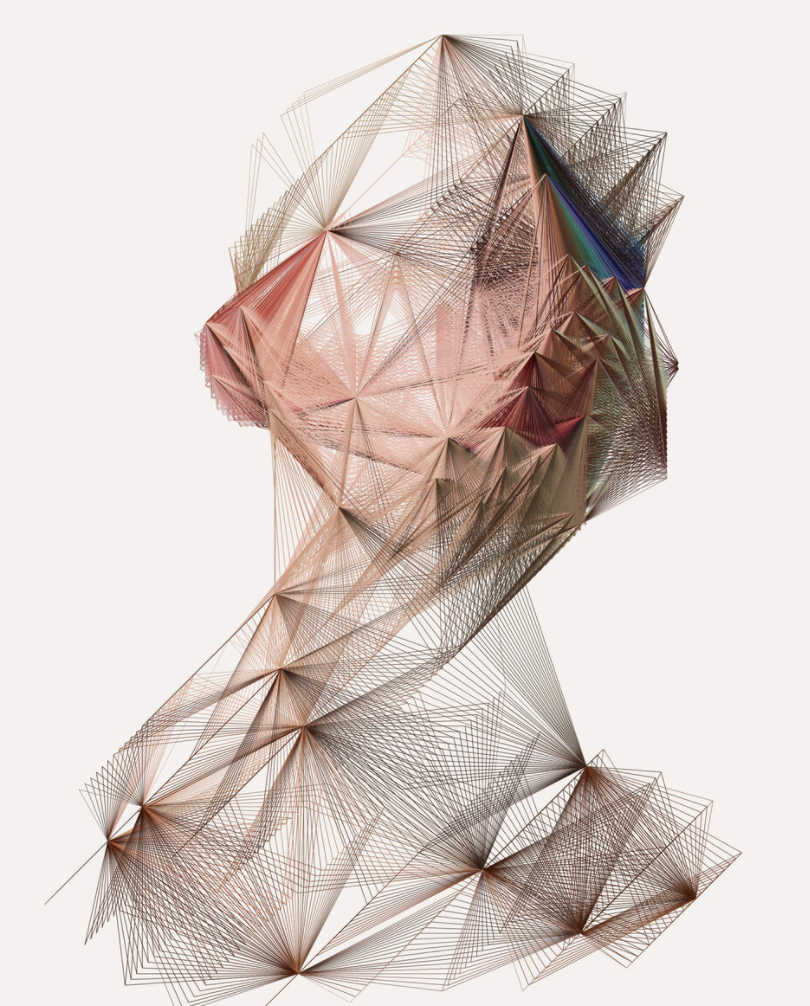
One computational project that I found inspirational was “datum” by Norimichi Hirakawa. This project was an audiovisual installation built through pixels. This project was part of Hirakawa’s residency program at the Kavli IMPU, where he experimented with the boundary between the human’s perceptible and imperceptible beauty. The pixels of the footage is arranged in a 6-dimensional space. Using pictures taken by the artist himself, he turns them into a mathematical analysis of pixels that warps curve, gradiation, motion, and color. This project shows how technology and computational art can be used to challenge concepts such as beauty and the sublime while also bringing together science and art by representing it through the beauty in the nature of data. I find this project to be inspirational through the visual and emotional impact that the project holds to the viewer, leaving them in strict awe. The binary aspect of art and science in his work blends creativity and coding.
Norimichi Hirakawa: http://counteraktiv.com/
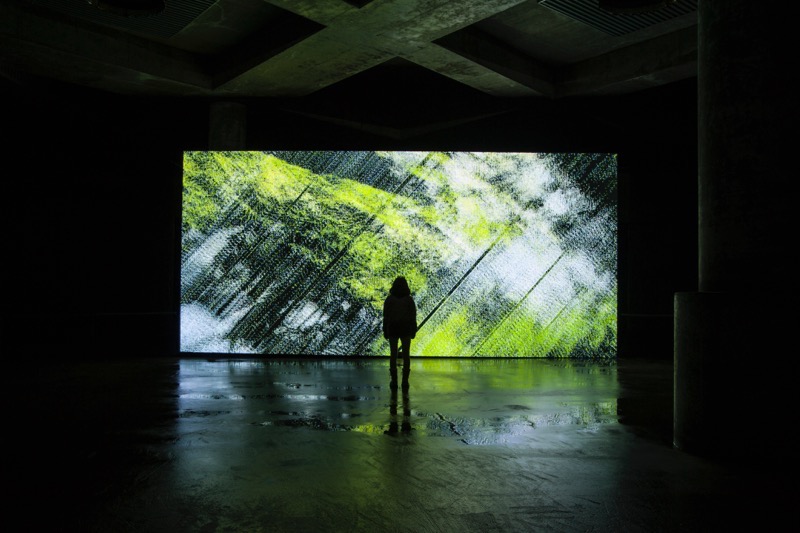
this is what I look like in the morning
function setup() {
createCanvas(200, 200);
background(220);
text("p5.js vers 0.9.0 test.", 10, 15);
}
function draw() {
background(184,238,147);
fill(0);
rect(67,98,69,77);
ellipse(101,100,69,64);
fill(226,197,159);
rect(82,130,39,42);
fill(255,132,132);
ellipse((width/2),195,157,71);
fill(240,207,161);
ellipse(101,120,55,64);
fill(240,207,161);
noStroke();
ellipse(101,105,58,51);
fill(0);
rect(109,102,14,3);
rect(81,102,14,3);
fill(255,160,159);
ellipse(102,123,10,7);
strokeWeight(1);
fill(250);
ellipse(116,111,12,8);
ellipse(89,111,12,8);
fill(0);
ellipse(116,111,5,7);
ellipse(89,111,5,7);
fill(255,0,0);
arc(102,135,14,8,0,PI);
}
The project I want to discuss is the 9/11 museum designed by Local Projects, an experience design studio. The 9/11 museum is designed to be a museum of collective memories with a plurality of views. Visitors can record their reflection on 9/11 and the curators will integrate visitor responses into the exhibit. By the end of the exhibit, visitors may write a note of hope and remembrance, and these notes will be projected temporarily onto a space near the beam, then stored in the museum’s permanent digital archive.
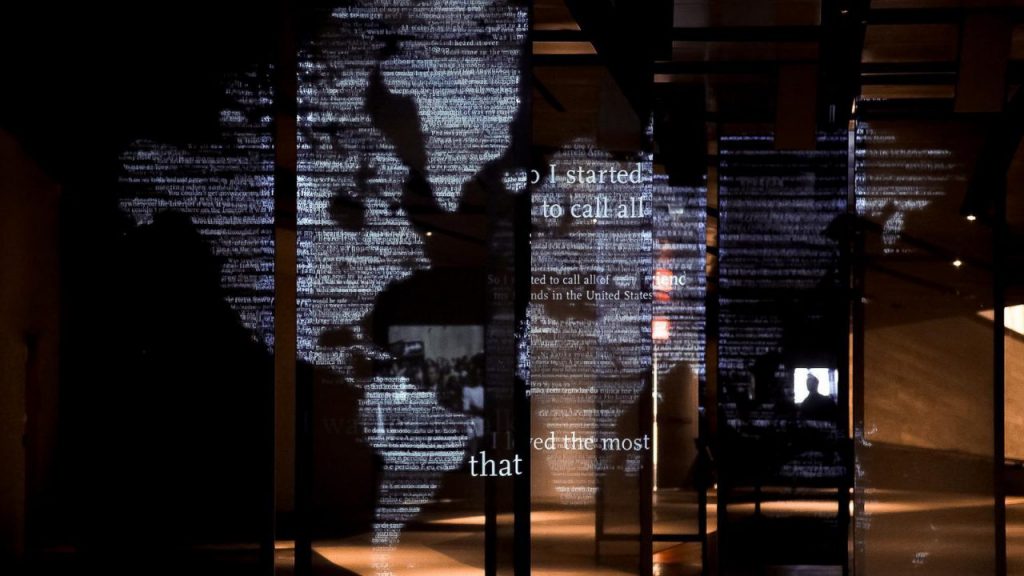
I like this project because it changes the role of the visitors from passive receivers to active contributors in how the tragedy will be remembered. Conventionally, museums provide a singular and authoritative narrative, and all the work of collecting evidence and making analysis will be finished beforehand. However, because 9/11 is still influencing some of us in the present, incorporating ongoing stories from the public successfully addresses the unsettled nature of the subject. The rawness and variety of expressions send a clear message: the past is still present.

I am not sure exactly how many people are involved in the developing phase of the project, but I learned that the team is multidisciplinary and they usually put a different interdisciplinary team on each phase of a new project because the main focus shifts as they move on. Speaking about the technical aspect, I am not sure what softwares are used but the project involves a powerful database that frequently updates the most recent articles related to 9/11 and store newly introduced notes and video record. As for the inspiration, Jake Barton, the founder of Local Projects says that he was influenced by Anna Deavere Smith’s Twilight: Los Angeles, 1992. He commented, “It was really an exercise in empathy, in trying to find the humanity of everyone involved.” I believe that this project points to a future where the museum is no longer a static, official, and definite place but a continuously evolving cluster of stories and memories from everyone and everywhere. I imagine the dynamic between the visitors, the installation, and the designers will change interestingly.
Before starting this course I had rather limited exposure to interactive projects. One project that I saw and was in awe of was my roommate’s interactive desktop wallpaper (no longer available on website).
My roommate had this “clock” that went through the different phases of the day and it did so beautifully. I always wondered what went into creating complex projects like this. At the time I was taking 15-112 so instead of feeling that seeing something amazing would be impossible, I was thinking about what went into its creation how it came to life.
When I saw it for the first time it wasn’t even the clock function that caught my attention – it was the intricate skyline/scenery and how the shadows and light glossed over the screen as it traveled through time. It was inspirational and got me to think about what the possibilities could be if I could learn how to create projects like these.

The word “computational projects” was first started off as questioning myself what it defines as. Computational defines as “the use of computers”, therefore I assumed any program or product that has been created by the technical ability of computers such as coding.
Facebook.com; an online social networking service, allows users to sign up for free profiles and it connects friends, family and people through online. It also allows users to share pictures, music, videos, and posts to anyone who has signed up in the website.
The founder of Facebook is a well-known billionaire, Mark Zuckerberg. Zuckerberg has started off making the website with a group of his classmates (Eduardo Savarin, Dustin Moskovitz and Chris Hughes) who he has met in Harvard. His classmates included a programmer, spokesman, and investor in the website.
Zuckerberg got the idea of Facebook by first making a site in Harvard which helped University students get to know one another better through online. It only took 2 weeks for Zuckerberg to build the first version of Facebook. However, this did not come at ease since he was accused for stealing the “idea” of an intended social networking site called Harvard connection.
Facebook.com was developed by a program called PHP. PHP stands for Hypertext Preprocessor and it’s a scripting language used for the development of web applications.
Facebook’s future goal still lies in the reason why they built the website: connection. The main objective of Facebook is to give people the power to build community and bringing the world closer together. I admire the power Facebook brings to the world- enabling users to connect with the world easier than ever before and bringing comminutes together.
Looking Outward Assignment 1 Basics
One of my professors from the previous few years is currently a computational design student in the architecture program after working in the field for many years. The project that I am speaking about is one in which he was able to generate different swatches of neighborhood in Grasshopper for Rhino, which would fit into the urban
context of the neighborhood very well, yet not seem like it had been gridded like traditional urban planning. I really admire the project because it shows that the power of architecture (especially in relation to computationally generated architecture) is greater than just at the scale of the house. I believe he did it alone and took a semester. He used a lot of custom software. Was inspired by others in the field of Computational Design. I think it points to a future where computers can provide a baseline for how to design or rework parts of cities where we can quickly propose a multitude of opportunities for the neighborhood. The project is called Urban Synthesizer by Jinmo Rhee.
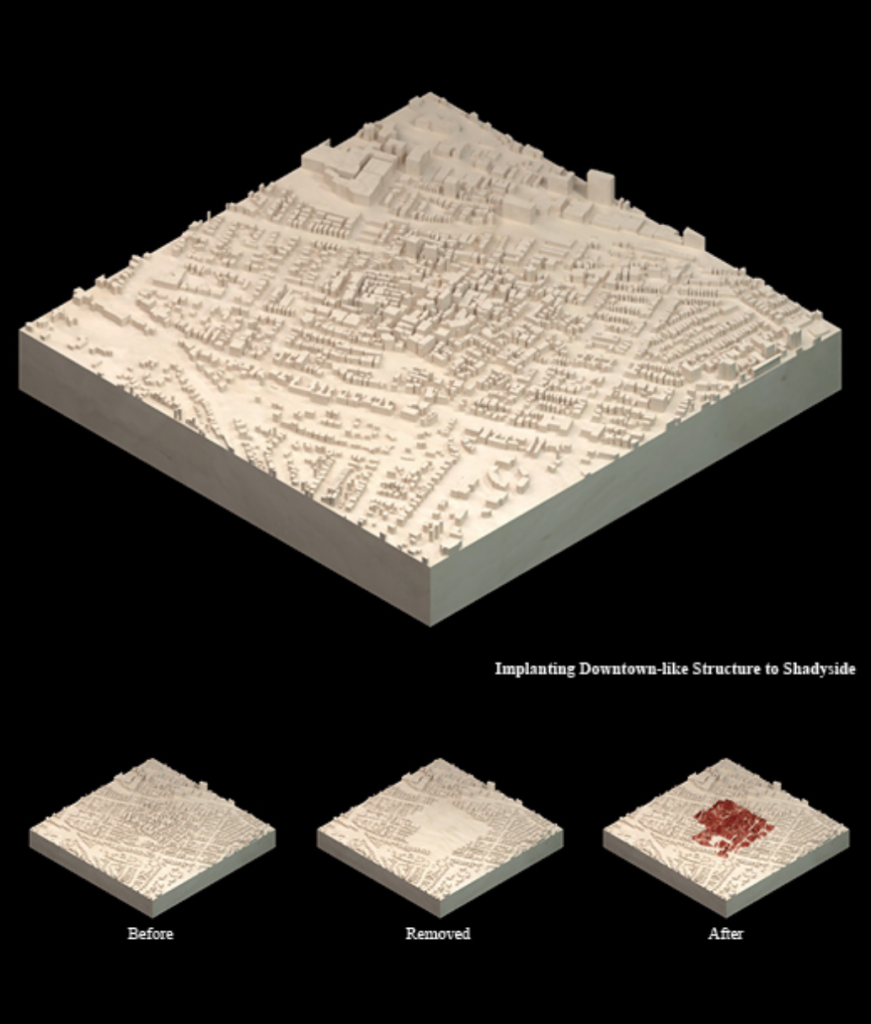

An interactive project I admire is Club Penguin. Club Penguin before its discontinuation was an online children’s game that became popular among people of all ages. I admire the simplicity of the game itself, but also the community built by the chat feature within the game. Even years after original players of the game had become “too old” to play, many still enjoyed it as well as created a multitude of different forms of art from it. Memes and YouTube videos were created daily about Club Penguin which shows the lasting impact the project had. The idea was started by a singular person and then developed by himself, Lance Priebe, and a co-founder, Lane Merrifield. The company itself was formed with 10 employees and eventually grew to over 10 times that. The game was developed for years and there is no information regarding how long the bare bones of it took to create. Sources state the game was created with commercial software, utilizing Flash Player to run. The code itself uses many things, such as java, ActionScript, and more. It has also been said that the company did create its own custom extensions for preexisting software for optimization. The fan page for the game states the founder got his inspiration from a newspaper depicting a penguin and a banana peel. The futures Club Penguin pointed to have already been seen. As an old, discontinued game, it still has a strong fan-base and inspires media. A simple project has had a lasting impact which gives insight into how influential computational projects can be. The game itself was even sold to Disney for a guaranteed $350 million dollars, revealing that someone with a passion and an idea can become successful no matter what it is.
A link is not possible as the game has been shutdown.
Official Title: Club Penguin
– Creator/Founder: Lance Priebe
– Co-Founder: Lane Merrifield
Source of Information: https://clubpenguin.fandom.com/wiki/Club_Penguin#:~:text=They%20never%20advertised%20at%20all,Puffle%20temporarily%20for%20the%20party
*This information may not be accurate as it is simply a fan made forum
*however it was one of the sole places I could find any information on the
*history and creation of the project.
